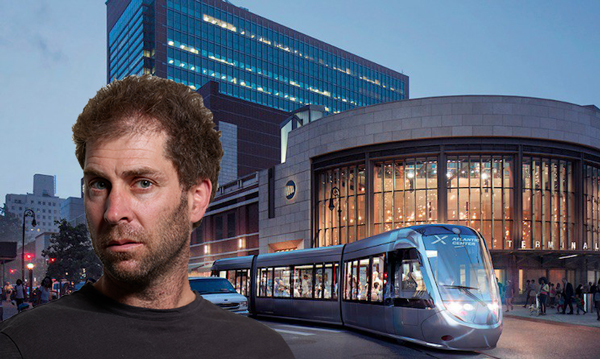Trending
Walentas: Real estate industry should do more to pay for NYC infrastructure
Two Trees head part of group that offered to help pay for BQX streetcar

UPDATED, May 18, 11:05 a.m.: New York has some of the most expensive real estate among major world cities and some of the most decrepit public infrastructure. To Jed Walentas, that means something isn’t right.
“As a society we don’t want our taxes to go up but we want government to pay for everything,” the head of development firm Two Trees [TRDataCustom] said Wednesday at the Only Brooklyn conference hosted by TerraCRG. “That math doesn’t work over time, and the single thing that we’ve created in this city is massive, massive real estate values.”
“And I think as a culture we’ve got to figure out a way to utilize that growth in real estate dollar value to fund our public goods” such as transit, parks and schools, he added.
Last year the advocacy group Friends of the Brooklyn Queens Connector, which Walentas, developer Doug Steiner, and Durst Organization executive Jordan Barowitz belong to, offered to help pay for a planned streetcar from Red Hook to Astoria. The streetcar, dubbed BQX, could pass by several Two Trees properties in Dumbo and South Williamsburg, although an exact route has yet to be finalized.
The de Blasio administration dismissed the private funding proposal, claiming the project would pay for itself over 40 years by pushing up real estate values and property tax revenue. Last month, however, Politico reported on a leaked internal city memo that argued the project might not pay for itself after all and faced “serious financial challenges.”
Walentas’ remarks come as a Midtown East rezoning proposal that would require developers who benefit from it to pay for public infrastructure is moving through public review.
The developer, who shared the stage with Alloy president A.J. Pires, the Downtown Brooklyn Partnership’s Regina Myer and Madison Realty Capital’s Michael Stoler, also talked up the Brooklyn office market. Earlier this month Bloomberg reported that the borough has struggled to attract major Manhattan office tenants, but Walentas argued that it is still “way, way underserved” considering how many people live and want to work there and that there is “no reason” developers shouldn’t add another 50 million square feet of office space over the coming decades.
“In a couple of years Brooklyn’s population surpasses Chicago,” Pires said. But if you compare hotel, office and apartment supply between the two cities “there’s a massive gap,” he said.
Correction: the article has been updated to reflect the fact that the BQX route has yet to be finalized.




